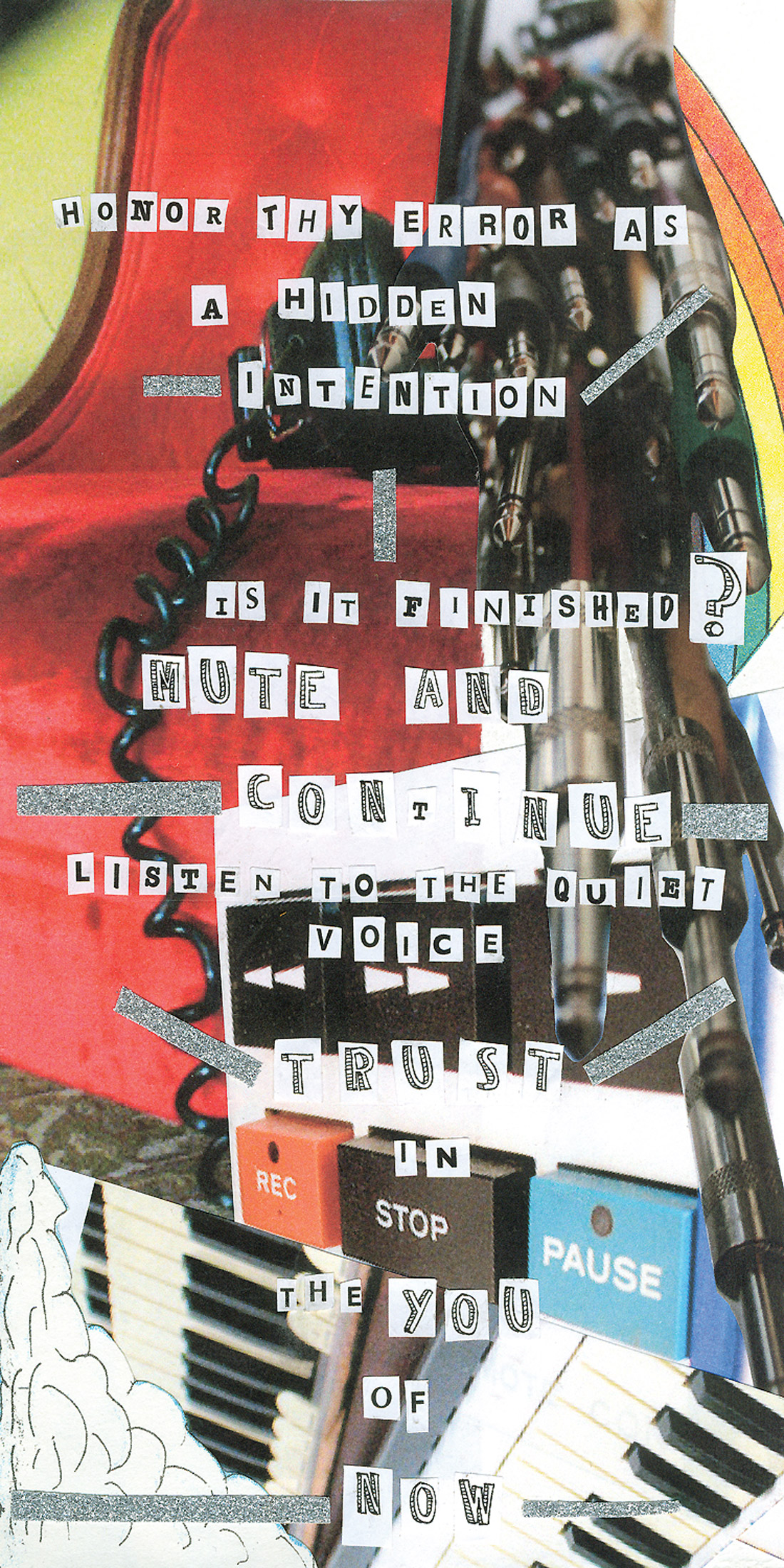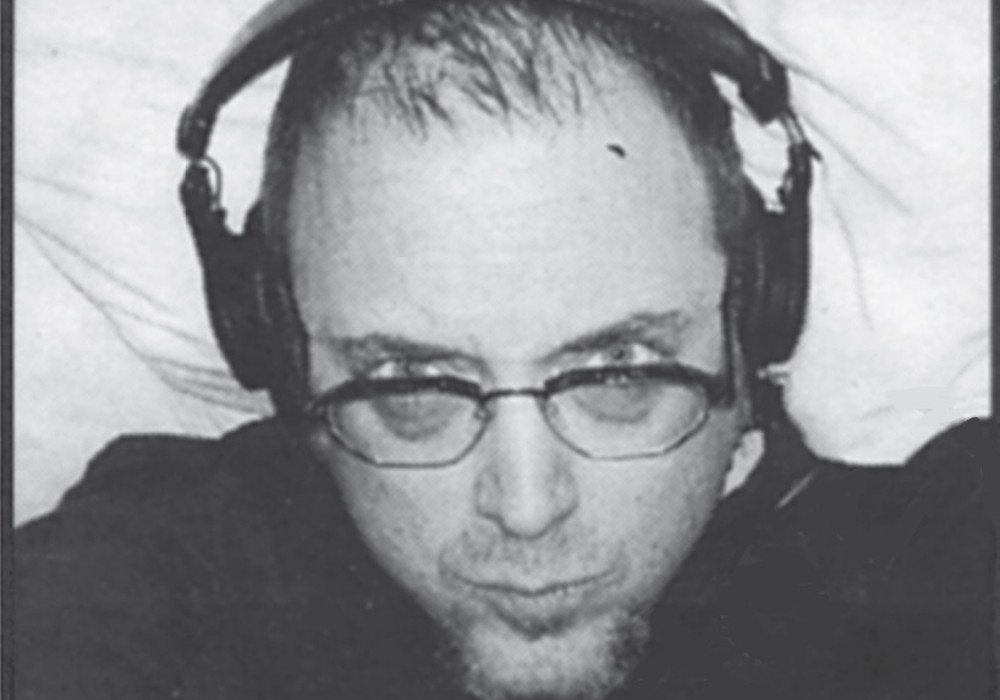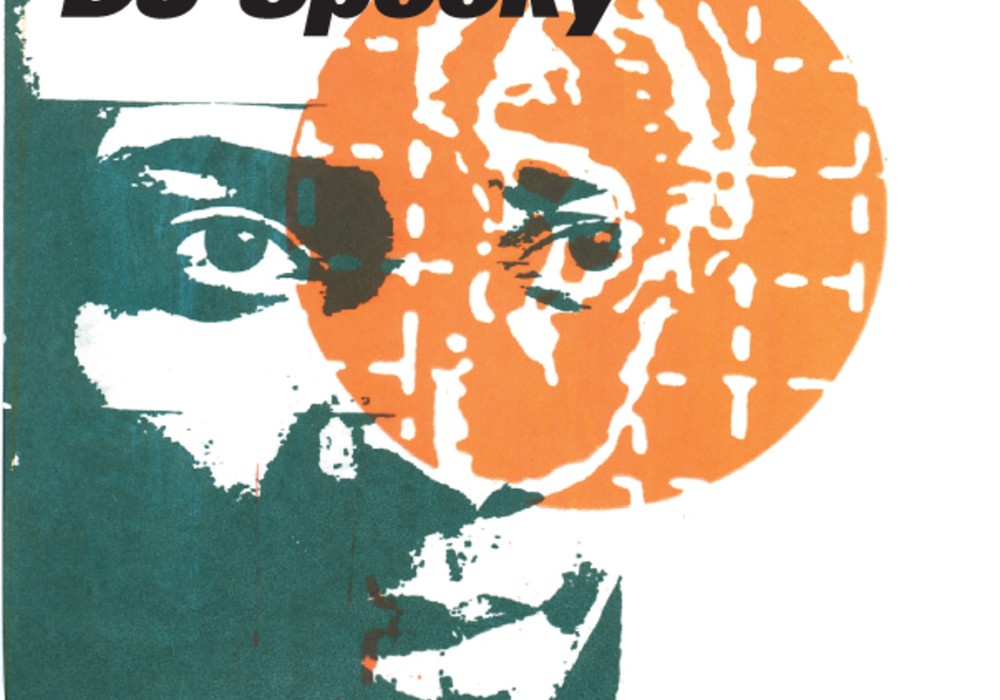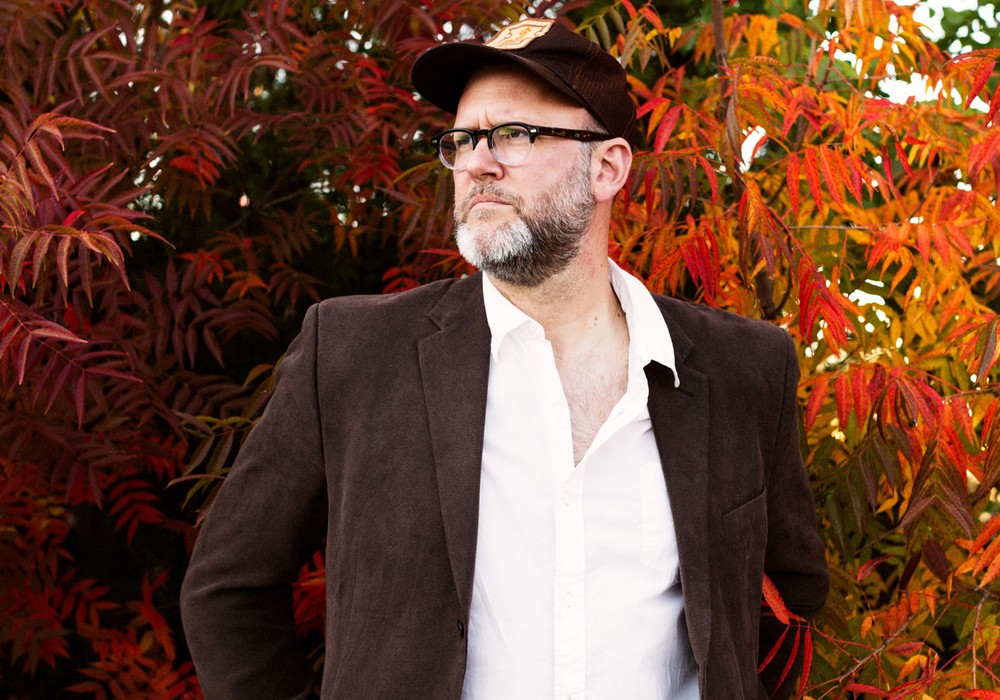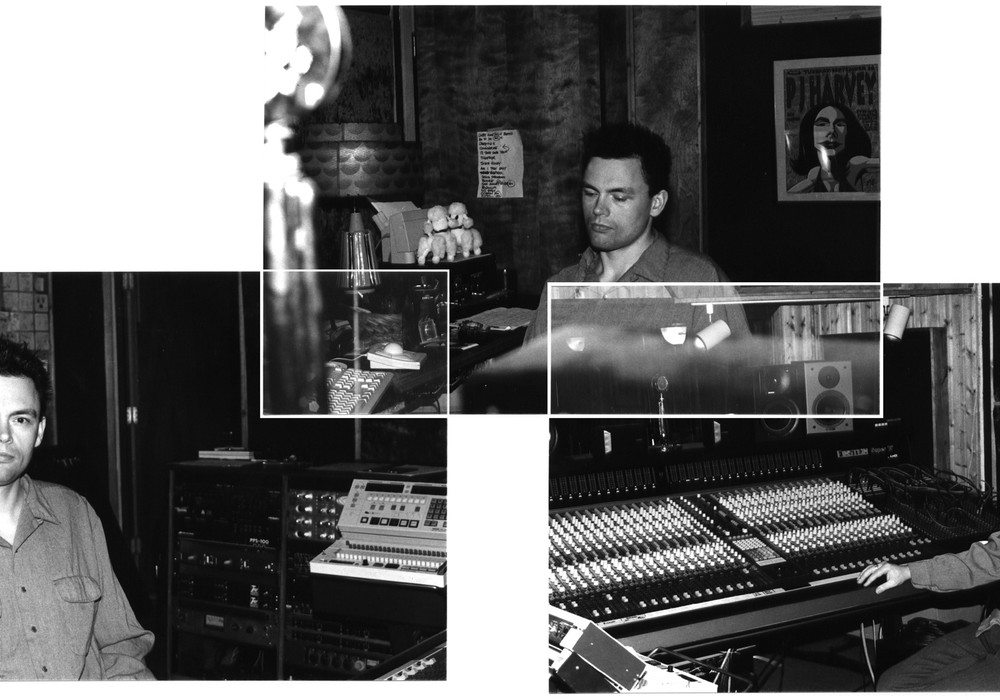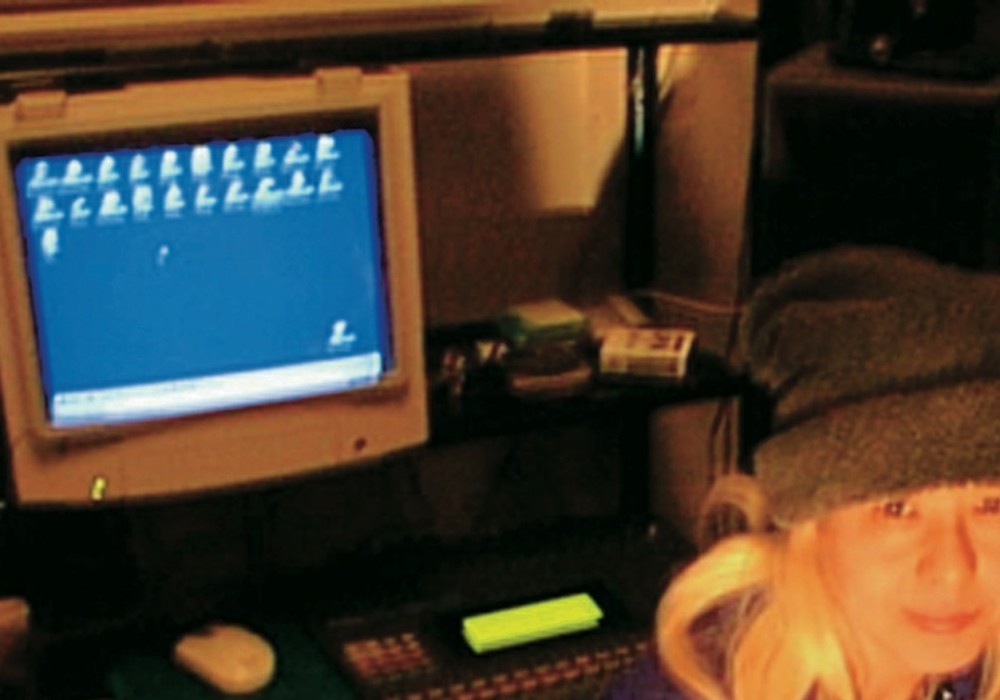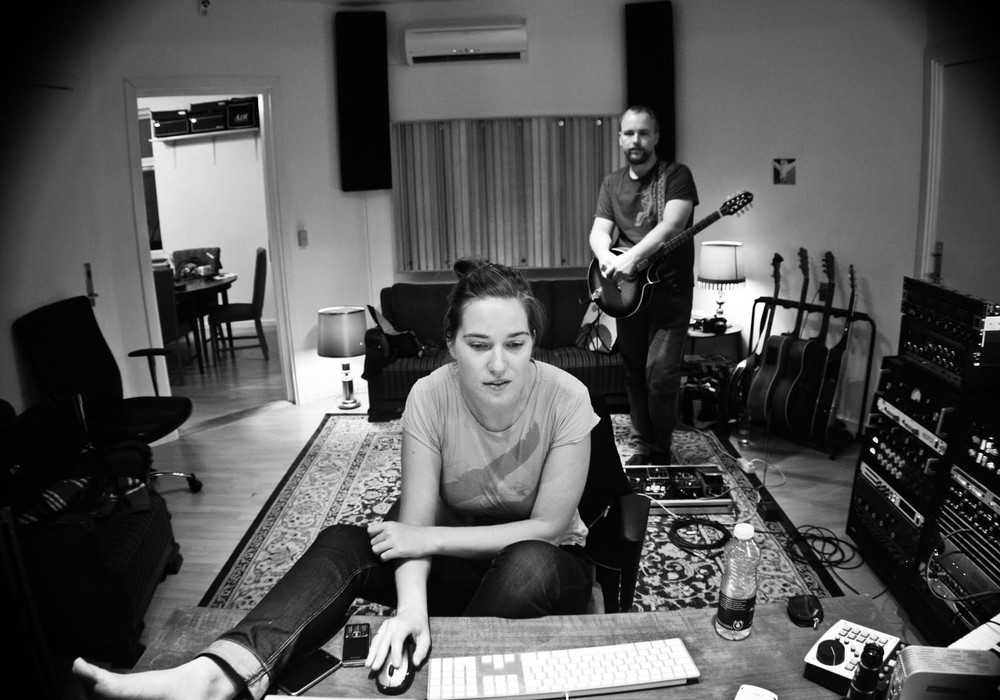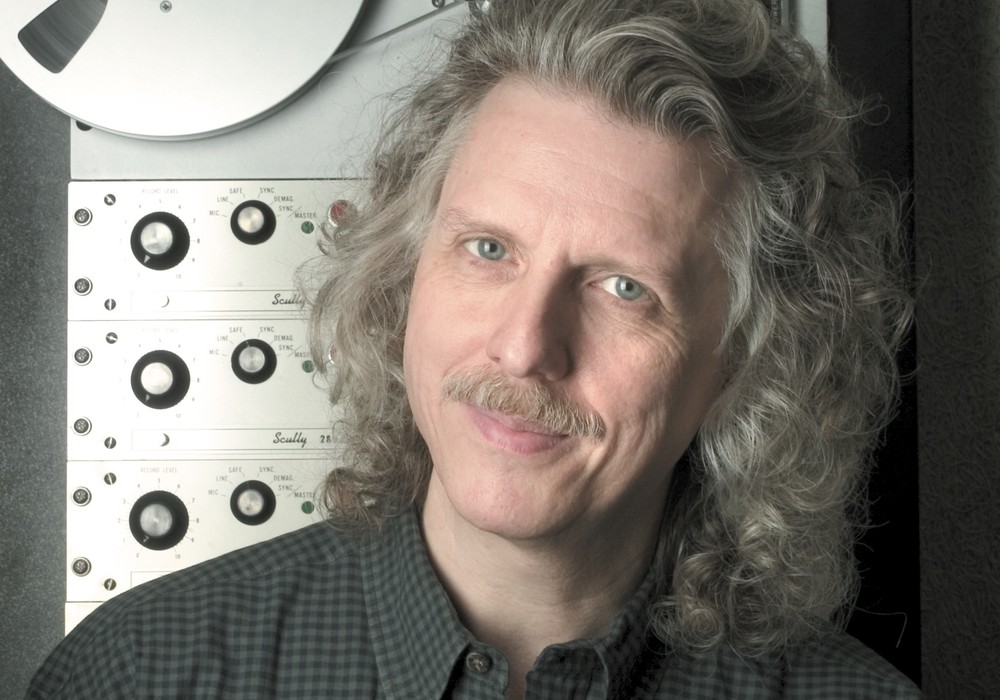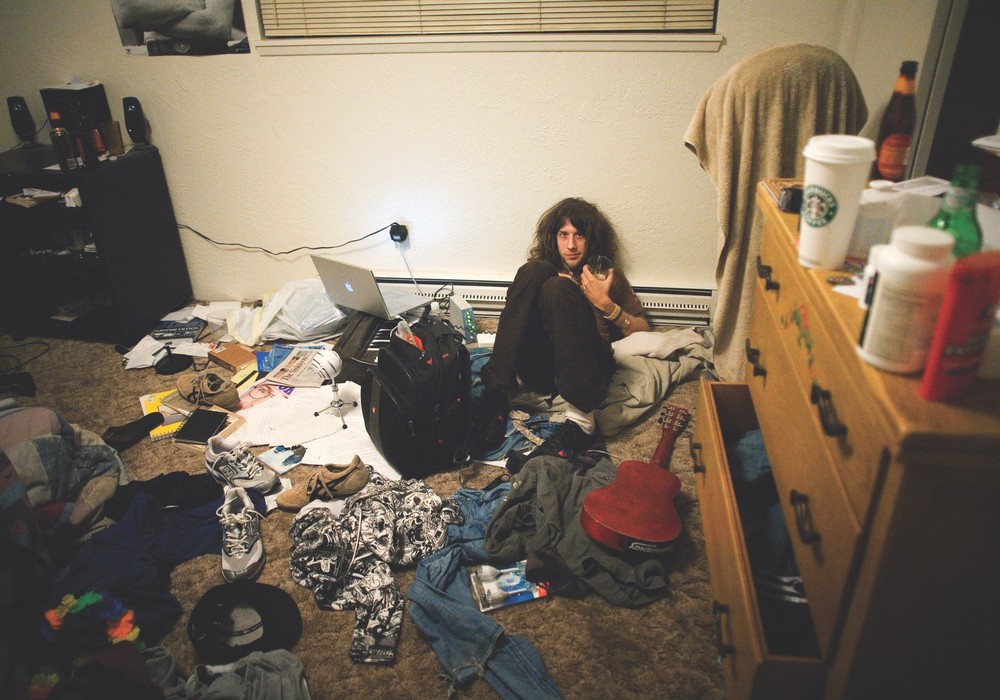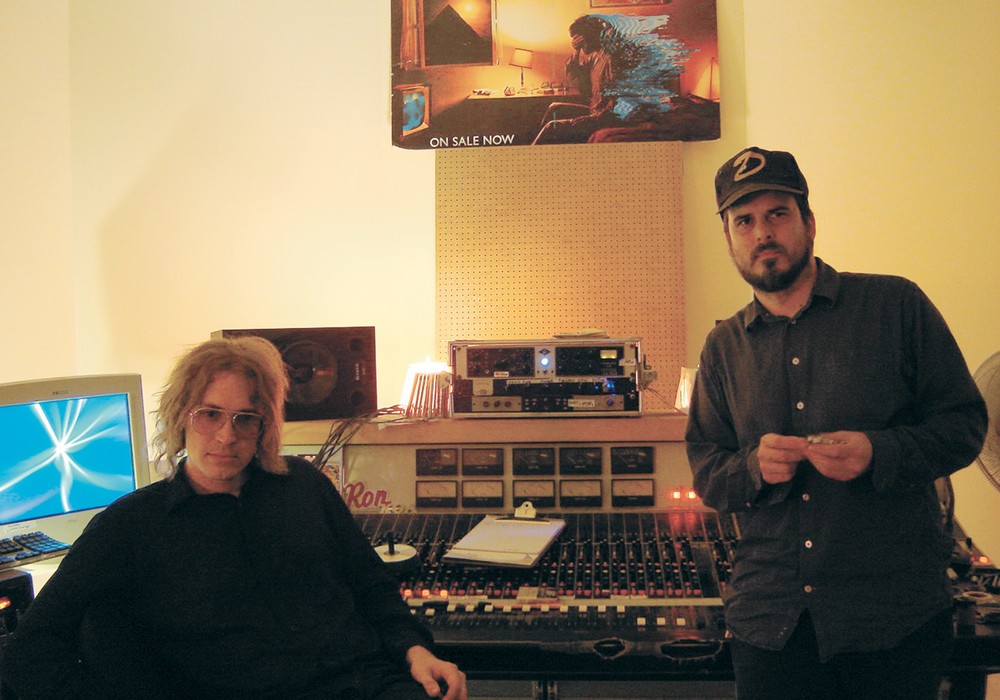A while back I met this guy in New York, and he tells me, "Hey, I just produced an album with RZA where we used a live band for basic tracks and then tried to make it sound like samples." I was intrigued. The record, Wu-Tang Chamber Music, isn't a Wu-Tang album proper, but it does feature members RZA, Raekwon, Ghostface Killah, Inspectah Deck and U-God, as well as many important guests. It's a cool listen, and Noah's story on how he ended up co-producing, mixing and engineering this album is interesting. Besides this project, Noah fronts his group War Game and has recorded the Historics album Strategies for Apprehension, featuring members of Icarus Line and Maroon 5, as well as doing remixes under the name Ruby Beats. Noah has recently worked with RZA on a new Wu-Tang record called Legendary Weapons which was produced in the same manner as Chamber Music. We sent Joel Hamilton (who had just been working on the similarly "hybrid" Blakroc project) over to meet Noah and see what was up. -LC
What's your history?
I was into hip-hop before anything else. When I was 11 I remember buying Ice Cube's AmeriKKKa's Most Wanted and my cousin bought Sonic Youth's Goo and we spent the whole weekend listening to both those records. I read The Source a lot in elementary school in suburban Boston. I went on to be a hardcore punk rock kid, but the way I got into music was definitely hip-hop.
How did you get into recording and production in general?
I've always been a music person and I've always been in bands. In 2001 I got a job at this place in Tribeca called Two Lines Music. It was full of crazy vintage synthesizers. Because this was after September 11th and we were downtown, there were no customers. I basically sat around, drank coffee and played with every synthesizer ever all day long.
If you fuck with a modular once, you'll understand gain staging and signal flow...
...envelopes and ADSR. Me and Chris Coady worked there at the same time together and we became close friends. He was already well into his career in terms of recording. The store had a pretty high-profile clientele — a lot of big producers — and I was the guy who understood hip-hop. So I was always talking to the hip-hop producers who came in. From there I ended up spending a lot of time in studios, and then I got asked to start doing interviews with producers for hip-hop magazines. That was the time when hip- hop producers were starting to become celebrities — Pharrell, Timbaland, Lil Jon and Kanye West — these were the people that they wanted on the cover. [Harris Publications] launched Scratch - a hip-hop production magazine — and I got hired as the technology editor. I ended up meeting tons more producers, hanging with them, getting feedback from them and being a liaison with technology companies. I became an editor at this magazine called Mass Appeal, and I also wrote for Vibe Magazine, doing technology writing. I had all this software that I was using and hipping people to that I was interviewing. The first proper record I worked on was with Chris Coady — this hardcore band called Das Oath that we recorded in a week at Headgear [issue #65]. It was a super fast record. From there I ended up doing some remixes [as Ruby Beats] for bigger indie rock bands like Architecture in Helsinki, Celebration and Rings. At the same time I was building my hip-hop connections with people I had met through doing Scratch.
How did you get involved with the Wu- Tang Chamber Music project?
I've had a relationship with the label [E1 Music/Koch] that's putting this out. I've been brought in for a few unconventional projects that they've had going on. I didn't know what I was gonna do when we started the project — I don't think anyone really did. It was like, "Here's a live band. You guys all know what Wu- Tang is supposed to sound like, so make something."
Who were the band for this project?
The live band is a group called The Revelations, who are a neo-soul band based out of Williamsburg. Their repertoire is very much oriented towards stuff that RZA might have sampled. That was why it made sense to do a project like this with them. It really started with pulling original tracks that were '60s and '70s soul that we felt evoked the vibe we were going for, playing that to them, mic'ing everything up and then having them do three or four jams based on these original tracks. Not even really interpolations, just like, "Here's the vibe. Can you rock something that goes with that?" Then it was going back and listening through that stuff, seeing where the feeling was really coming through and taking those parts and breaking that out into something that works as a song. The production team on Chamber Music was basically myself, Lil' Fame [Jamal Grinnage, aka Fizzy Womack] from M.O.P. and Andrew Kelley. So after we had all these tracks it went back to a more hip-hop methodology, where we were making beats out of these tracks.
Creating your own source material and treating it like a sample?
Exactly. At the end of the day we wanted something that was like Enter the Wu-Tang (36 Chambers), and I think a lot of live hip-hop records fall short for the listener.
They feel compelled to be too song-y and too musician-y.
Which just doesn't translate. You want it to resonate with the feel that people are expecting, but you wanna create it in a new way and bring a new energy to it.
There were some collaborations in the '90s that fell short for that exact reason.
Or feel like two completely separate songs. I'm really proud of this project on a lot of levels, but one of the things that makes me most happy is when you read the feedback from the hip-hop world and how excited people are about it. That's the funny thing when you talk about Blakroc or Chamber Music.
What was your working method? Did you do preproduction?
Preproduction was all about vibe, listening to the tracks that we felt were inspiration or source material for other Wu- Tang songs that we really loved. So mic up the drum kit- we had a small live room — and we had bass and guitar in the control room going DI. We had a click track going to the drummer's headphones 'cause we wanted everything tight in terms of tempo, and we let everything flow from there. We also had a keyboard player who was in on some tracks. The way it ended up being edited was that drums and bass were always the thing that ended up staying, and sometimes the guitar part would stay and other times it would come in from some other part of the track. The keyboard player was doing a wide variety of stuff, from more conventional synth and organ to sound effects that worked well in some of the interludes. From there it was take the jam and listen to it: "What are the loops that are working?" Then the band would take off, and the production team would take the parts we liked and map everything as a beat. Then I would take that basic beat and mix it. For me it was like, "This has to sound like it came out of a fucking Ensoniq EPS." If it doesn't sound like a 12-bit sampler, it's not gonna sound like an old Wu-Tang record. So then it's all about how you use distortion in the mix.
So let's stay on the input side for a second. Were you engineering for vibe?
One hundred percent. The studio we were tracking in was somewhat limited in terms of gear. I definitely have stuff with more character, but I'm not gonna hate on any of it, 'cause at the end of the day I think that we got sounds that really worked. It forced me to think more about placement. The drummer, Gintas Janusonis, had a bunch of snares, so we messed around with those. We didn't have every mic to work with — it was all about getting the right angle on it. I didn't try to get too much out of the pres 'cause I felt like the more I tried to futz with it the farther I might get from something I'm gonna be happy with. I knew I was gonna be processing stuff a lot. We were trying to get a sound that feels good and that you want to listen to it a bunch of times.
You're one of the producers, right?
I was producing, but [was] also the tracking and mixing engineer, so at the end of the day it came back to me.
Where were you working?
Have you seen the small room that's attached to Headgear? It's called Chop Shop Studios, and it was over there briefly — now it's in a really big space on North 12th and Kent. The live room was super tiny, but it really worked. My own studio is in the West Village.
You don't need a gymnasium; you just need the right drummer.
I think that's a good point. I really have to tip my hat to the players themselves, 'cause they really did work hard to get the feel just right. I think Gintas really understood what had to be done, and I think that kind of positive energy helped make the whole thing really work.
So what's your point of reference? You compared it to early Wu-Tang? Old funk records?
Those were all what was really in my mind, but at the same time I didn't know how the fuck I was gonna make it sound like Wu-Tang. I just had to trust my gut and believe that this was gonna work. I remember sitting with all these beats that we had made, getting ready to mix them to send them to the MCs, and it was like, "Okay, what does it even mean to mix these tracks?" Sitting there and sort of having a "Eureka" moment, where I was like, "This is the sound," and then getting to apply that to everything else and really starting to have the energy that we needed to have it translate.
Did you bring anything in specifically for sound?
In terms of tracking, nothing special. In the mixing process I had to take these loops that were just sort of dry little funk loops, and I had to make them into Wu-Tang — dark psychedelic, satanic rap. That process just involved lots of distortion — different guitar amps, SansAmp and Digidesign's Reel Tape.
What did you mix it on?
It's all in the box. This record is 100 percent Pro Tools. I really used the SoundToys plug-ins a lot, especially Crystallizer. I used the Eventide Anthology bundle for pitch shifting, 'cause the bass line has to morph into some far out, horror movie sound. I'm really creating new parts out of things that didn't exist. I was using signal processing as a composition tool. The fundamental tracks are a drum kit, a bass, a guitar, sometimes a guitar with an effect and sometimes a keyboard, but that's not quite enough to evoke hip-hop — especially Wu. I had to go in and bring another level of sonics to create weird atmospheres, to make this other dimension that people are going to relate to in terms of this thing that they think of when they think of Wu-Tang. I used a SansAmp [plug-in] on the master bus, which I did on a couple of beats. I don't know if I could recommend that to everyone, but there were a couple of tracks where SansAmp is hard on the master bus for the instrumental side — not necessarily on the vocal bus. You're hearing this shit and you're like, "Wu- Tang is the coolest, most far out, most fucked up group ever, and this music has to be that fucking awesome."
Make a bold move.
Exactly. I'm listening to these beats that sound dope, but you need to take it somewhere. SansAmp, pitch-shifter, Crystallizer — run them back through each other and then it starts happening. You see Wu-Tang as a blueprint and you have to push it. You all of a sudden have the freedom to try the most crazy idea you can think of, because Wu-Tang already is established as a group that pushes it and does fucked up crazy shit. RZA beats are not even quantized a lot of the time. The sounds are dirty. On 36 Chambers half the tracks sound like shit, and that's why you love it.
So how does Chamber Music break down track by track?
There are two things happening on the record. There are 17 tracks and nine of the tracks, are interludes and eight of the tracks are proper songs with rappers and beats. When we made all the tracks, we had 13 beats. We had the idea of the project, but at that point if the rappers weren't cool with the beats, the project was not happening. It was a little bit of an anxious moment, 'cause I felt I really pushed the envelope in terms of what I had done in terms of mixing and production, and really brought this vibe. Now I had to send it to Ghost[face Killah] and Raekwon, and if they weren't down with what I did, I would fail. Those beats got sent out. Then word comes back, "Hell yeah. We're in. We wanna do it." We started getting a verse at a time. We don't have Method Man and we don't have GZA on this record, but you've got Ghostface, Raekwon, RZA, Inspectah Deck, U-God, and on top of that we added a lot of people who are sort of classic '90s rappers.
Who else?
Kool G Rap, Sadat X from Brand Nubian, Cormega, M.O.P., Masta Ace and Sean Price. It's a combination of people who recorded their verses remotely and people that recorded in the studio, but it came together a piece at a time. We went down to the Wu Mansion in Jersey where RZA has a midtown-caliber studio in the basement. SSL 9000, Boxer mains. We chilled down there and worked on a couple tracks. While we were down there we had to figure out how to make the tracks we had into a record. The label had this idea for some interludes, so we set up some mics, and me and RZA talked philosophy, drugs, Eastern thought and Five-Percent Nation stuff. The Revelations came in again and they played experimental, sort of Shaw Brothers [Hong Kong film studio] instrumental kind of stuff. We did 10 or 12 tracks of that, and then I mixed those in the most psychedelic manner possible. Then this dialogue me and RZA had got chopped up over these crazy beds of cinematic movie instrumentals between all the beats — half karate flick stuff and half me and RZA talking about philosophy.
Sort of mood pieces that frame the proper tracks?
That's another thing that's cool about this record, is that it's a beginning-to-end kind of listen. This is a retro record. We tried to make a record that sounds like a classic hip-hop record, but it's new and it's done in a completely different way and it's exciting — it exists in its own world and we created it.
